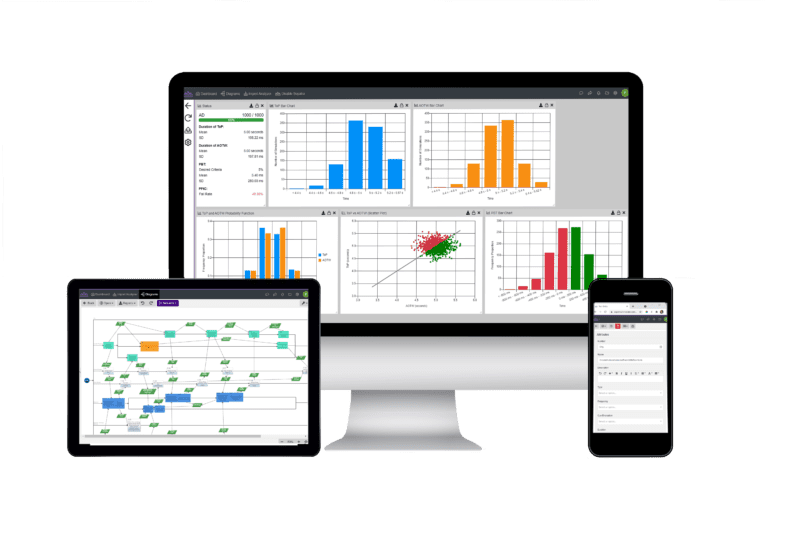SPEC Innovations, the developer of the first cloud-native, model-based systems engineering solution, has released a new software product, Sopatra. Sopatra, which is powered by Innoslate, is the first cloud-native software tool that uses artificial intelligence to turn Standard Operating Procedure Documents into process models. 
According to The United States Environmental Protection Agency, the development and use of SOPs are an integral part of a successful quality system as it provides individuals with the information to perform a job properly, and facilitates consistency in the quality and integrity of a product or end result. This article will explore Sopatra and how it is revolutionizing SOPs.
Exploring Sopatra
Sopatra is a digital assistant that will convert text to an LML Action Diagram and will execute the simulation automatically to check all possible paths through the procedure. Sopatra was designed to demonstrate the improved creation of SOPs by the automated creation and verification of SOPs using a digital assistant (DA).
SPEC Innovations’ vision for Sopatra is:
- Automated Text Entry and Analysis
- Automated Voice Recognition Entry and Analysis
- Automated Mixed Reality Entry and Analysis
- Simulation and Analysis of Standard Operating Procedures
It has to be noted that Sopatra is powered by Innoslate. Innoslate is a model-based systems engineering solution used by thousands of engineers and analysts across the globe. This solution provides an end-to-end system lifecycle solution. Their Data Management provides bulk editing, advanced query search, rollup, labels, customized reports, and more. Their Schema Editors allow customization and flexibility, while their modeling offers full SysML, LML, and DoDAF. The models can be simulated to find variance in cost, schedule, performance, and risk.
What Are SOPs?
A standard operating procedure (SOP) is a set of steps and instructions created by a business or organization to assist their employees to carry out routine operations. SOPs aim to achieve efficiency, quality output and uniformity of performance. This is meant to be done while reducing miscommunication and failure to comply with the specific industry’s regulations.
But according to Dr. Steve Dam, SOPs can be flawed. Operator tasks to complete an SOP are often long and complex. Seeing that the most important part of SOPS are indicators/cues, the operator may need to have long-term memory (LTM) to follow it through. Due to human error, the operator may not be able to remember when to complete specific steps and this may lead to a catastrophe in an emergency. Other issues with SOPs are:
- Imperative steps in the SOPs are known to be missing due to the automatic level of consciousness
- In SOPs the action is specified, but not the time or stage when it should be completed
- Information required to perform the following step is not available
- The procedure is unable to be completed in time before a hazardous event
- SOPs are difficult to learn due to user-interface cues
- Poor procedural training
- There are often no specific procedures for specific scenarios
- The procedures across System-of-Systems are not compatible
The solution to these problems are using modelling and simulation to identify SOP problems early. Sopatra is able to do this.
How Sopatra Operates
The original SOP, which is formatted, follows a NLP processing conversion of text SOP to become a functional model. This will then generate a suitable SOP. Supporting documents are involved in this process, such as acronyms, input devices, output displays and time distribution databases. The acronyms, output display, and input device files are all in simple list formats, while the text and word files are created with expert industry knowledge and are able to be edited.
Users are able to create more reliable SOPs in four simple steps, using Sopatra:
- Import
Users can import their Standard Operating Procedures and related materials into the Text to Diagram automation via NLP technology. Guides are available for users to successfully format the SOP for a better import process.
- Model
Once the SOP has been imported, Sopatra will do the modeling. Users are able to add attributes to each procedural step, add or delete steps, create a decomposition of steps, and more.
- Verify
Once the model has been created, users can run their model in a Discrete Event Simulator. This ensures the new process works and provides users with analytics such as Time of Performance, Gantt Chart, and Tree Map.
- Analyze
Users then have the opportunity to check variance. This can be achieved by running the model in the Monte-Carlo Simulator. Users will then receive valuable analytics on Procedure Buffer Time (PBT), Allowable Operating Time Window (AOTW), and Probability of Failure to Complete (PFC).
The Takeaway
This cloud-native software tool is set to revolutionize SOPs and is able to solve the current problems faced by SOPs according to Dr. Steve Dam. If individuals would like to take advantage of this new tool and improve their SOPs, they could create a free account here.


















































